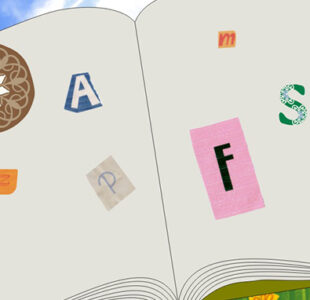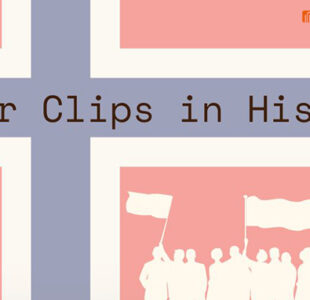- No Comment
Paperclip National Symbol – A Lesson of History
You will learn today that throughout World War II, the paperclip national symbol served as a quiet, non-violent symbol of resistance. Adolf Hitler realized that if he wanted to win the war, he had to find a method to get over the Allied blockade of Germany in April 1940, just a few months into World War II. He focused on Norway. It was a hazardous move, but having control over Norwegian waterways would make bringing products into Germany a little bit simpler. Norway had declared itself to be neutral in the battle, but Hitler wasn’t going to let that stop him from achieving his goals.
A culmination of anti-Jewish laws was the deportation of 700 Jews from Norway to Auschwitz. Mass executions were not unknown, though most were carried out on a much lesser scale than the horrifying atrocities occurring in certain other parts of Europe. Additionally, for five years, Norwegian citizens had to live alongside German soldiers every day. By 1945, there were around 400,000 German soldiers occupying Norway and managing its 4 million citizens. Oslo University students began donning paperclips on their lapels in the fall of 1940 as a non-violent sign of resistance, cohesion, and pride in their country.
Since symbols of the royal family and the state were already forbidden, they sought a cunning method to express their opposition to Nazi philosophy. In addition to donning a single paperclip, Norwegians also created paperclip bracelets and other pieces of jewelry as a means of symbolically uniting them in the face of such hardship. Why use a paper clip? In addition to the concept of holding things together, it is claimed that the paperclip was chosen as a symbol of resistance in part due to the false belief that Johan Vaaler, a Norwegian man, was its creator. In 1901, Vaaler’s paperclip was given a patent in Germany and the US, but he didn’t submit an application in his own Norway.
Vaaler’s concept was never put into production or marketed, and his patents eventually ran out of validity. Even yet, a lot of encyclopedias mistakenly identify him as the creator of the paperclip, and a 23-foot monument was created in his honor in 1989—even though it depicts the Gem paperclip rather than the one Vaaler invented. The Gem type paperclip, not Vaaler’s design, was featured on a commemorative stamp made in Vaaler’s honor.
Although it was widely believed that a Norwegian man created the paperclip, the fact that it was widely used, inexpensive, and not out of place made it look like the ideal emblem for quiet, non-violent opposition in Norway. The Germans eventually learned that the paperclip was being used as a sign of resistance, and it quickly became into a crime to wear one.
The issue was that Vaaler didn’t really create the paperclip as we know it; the Gem paperclip was already in use and well-liked in Europe when he came up with his design. Because Vaaler’s paperclip lacked the crucial second loop that would have allowed the papers to be more or less embedded in the clip flatly, the papers had to be inserted by lifting the outer wire slightly and pushing the papers into the clip so that the rest of the clip stood out from the paper at an angle of about 90 degrees.
Paperclips were worn by Norwegians as a sign of resistance against Nazism and anti-Semitism, embodying as a paperclip national symbol, and wearing one could mean arrest – but many people wore them nevertheless. The paperclip national symbol was invented in Norway, and that’s how it came to be a national war-time symbol. The ability of this simple little device to bind things together was used as inspiration for the binding together of the Norwegian people, a paperclip national symbol. So, during the German occupation, many people wore paperclips on their cuffs and lapels, or on their hats. According to author Henry Petroski, people wore them “to show patriotism and irritate the Germans”. Wearing paperclips was not approved by the government, but started out as a grass roots campaign.
Wearing a paperclip may result in imprisonment, but many Norwegians nonetheless did so as a symbol of their opposition to Nazism and anti-Semitism. Norway is where the paperclip originated, which is how it became the country’s wartime emblem. The Norwegian people’s tying together, united under the paperclip national symbol, was modelled after the paperclip’s capacity to tie things together. As a result, many people under the German occupation donned paperclips as caps, lapels, or cuffs. People wore them, according to author Henry Petroski, “to express patriotism and annoy the Germans.” Paperclip attire was not officially sanctioned by the government but rather began as a grassroots movement.
Related Posts

5 Stories about Paper Clips that will…
Have you ever given thought to how frequently we take paper clips

Paperclips in History: The Norwegian Resistance Movement
During World War 2, Nazi Germany conquered Norway, and the country's populace
